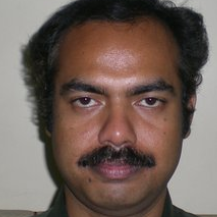
Ruben Ray
Work place: Department of IT, Government College of Engineering and Leather Technology, Kolkata, 700098, India
E-mail: ruben.ray@gmail.com
Website:
Research Interests: Computational Science and Engineering, Computer systems and computational processes, Computer Architecture and Organization
Biography
Ruben Ray is an assistant professor of Department of IT, Government College of Engineering and Leather Technology, Kolkata, India. His research area includes Sensor networking and remote sensing.
Author Articles
High Payload Watermarking using Residue Number System
By Shubhendu Banerjee Sayan Chakraborty Nilanjan Dey Arijit Kumar Pal Ruben Ray
DOI: https://doi.org/10.5815/ijigsp.2015.03.01, Pub. Date: 8 Feb. 2015
Information hiding or data hiding, also known as watermarking, has become a part and parcel of covert communication and copyright protection. Maximizing watermark payload is a major challenge for watermark researchers. To overcome this issue, we have proposed a new color image watermarking technique, using residue number system (RNS). RNS refers to a large integer using a set of smaller integers which relies on the Chinese remainder theorem of modular arithmetic for its operation. The proposed method takes pixel values from three watermark images and embeds them into the main cover image. Experimental results presented in this paper shows that the watermark can be successfully embedded and extracted from an image, without distorting the original image using the proposed technique. The high peak signal to noise ratio (PSNR) and payload values claims the robustness of the proposed method.
[...] Read more.Cellular Automata based Encrypted ECG-hash Code Generation: An Application in Inter-human Biometric Authentication System
By Subrata Nandi Satyabrata Roy Jayanti Dansana Wahiba Ben Abdessalem Karaa Ruben Ray Shatadru Roy Chowdhury Sayan Chakraborty Nilanjan Dey
DOI: https://doi.org/10.5815/ijcnis.2014.11.01, Pub. Date: 8 Oct. 2014
In this modern era, biometrics incorporate various mechanisms to recognize inimitable features of human beings by utilizing their biological and evident features. This paper proposes a novel technique for constructing a resilient and secure biometric recognition system. In this paper, an ECG-hash code of two distinct individuals has been formed by taking dot product of electrocardiogram (ECG) feature matrices of two persons located at two different sites at respective databases. The validity of the system increases as samples from both persons, between whom the transmission takes place, are essential. Besides, electrocardiogram is such a unique feature of an individual that could not be compromised at any circumstance as contradictory to other features like fingerprints, face recognition etc. Moreover, the ECG-hash code is encrypted using rule vector of cellular automata that gives better security in terms of randomness of generated cipher text.
[...] Read more.Other Articles
Subscribe to receive issue release notifications and newsletters from MECS Press journals